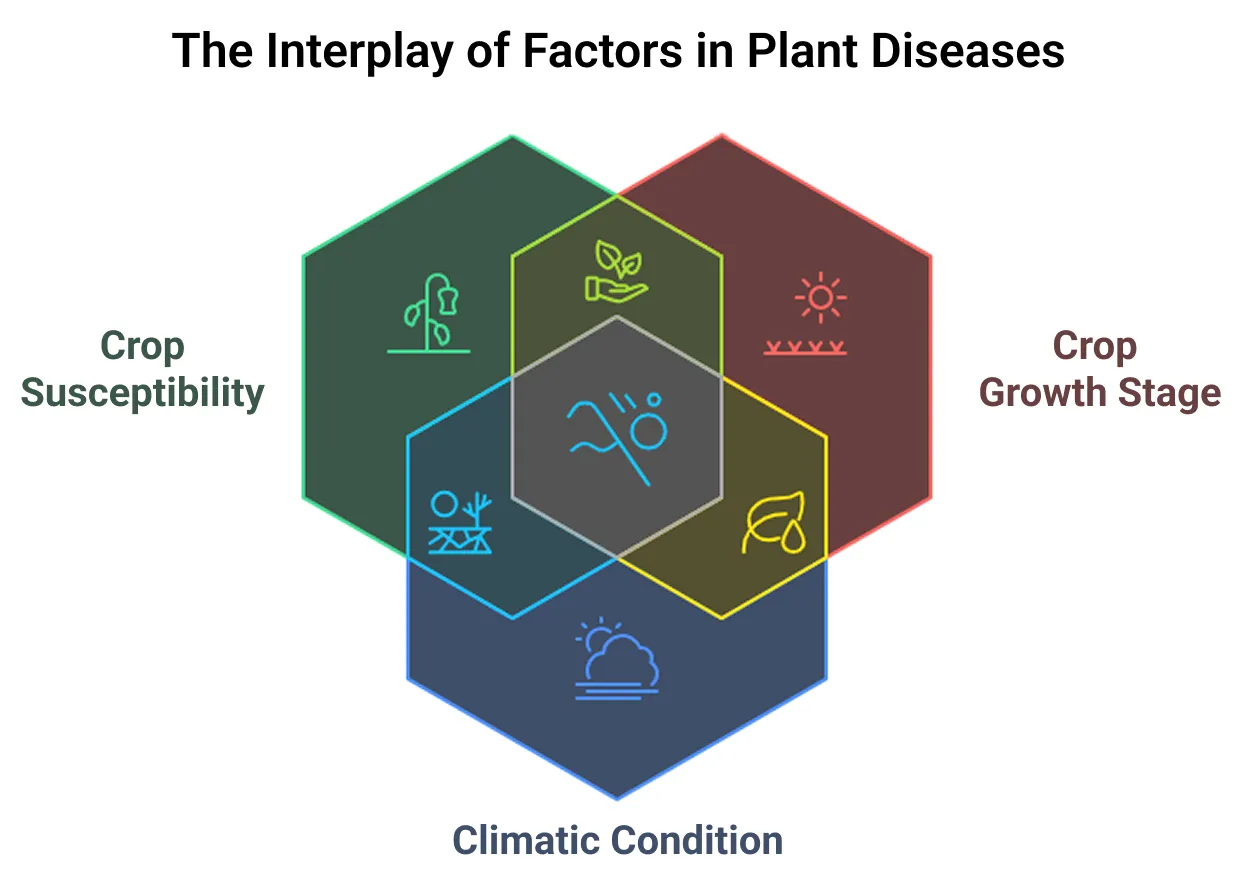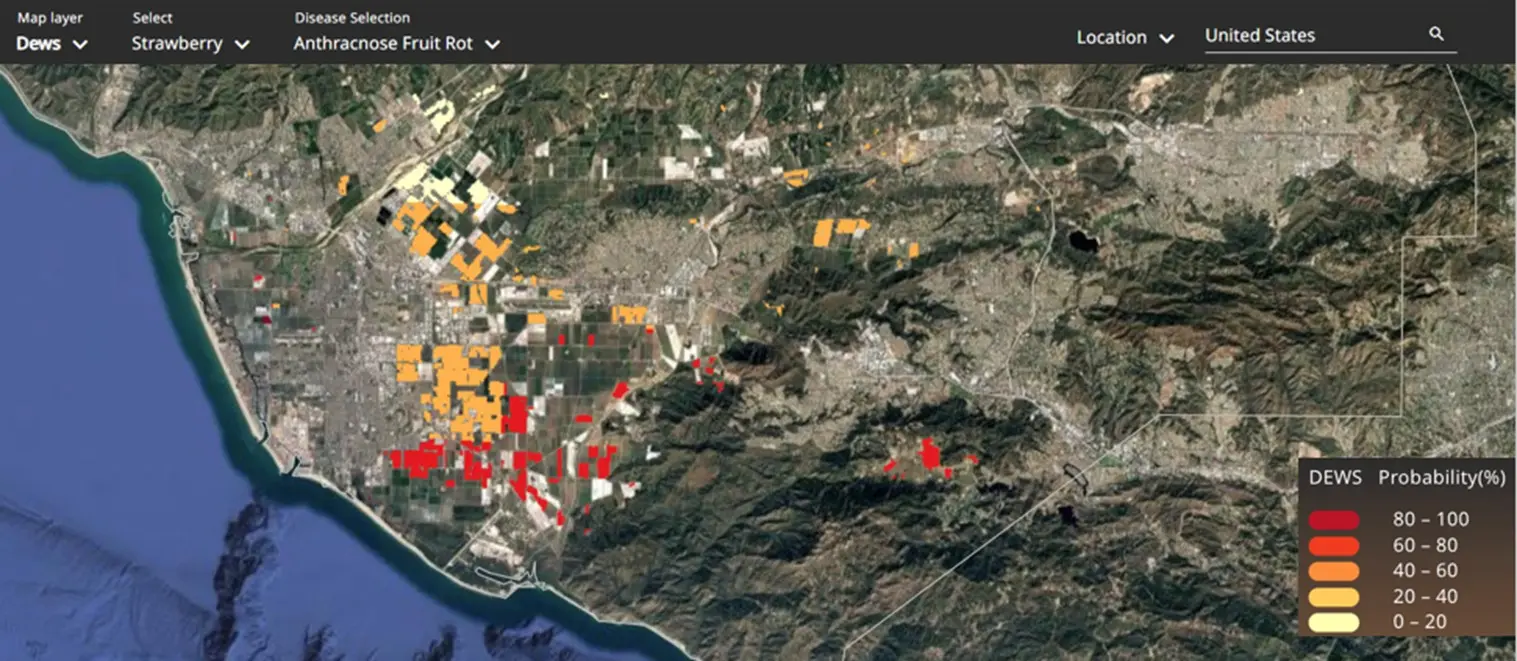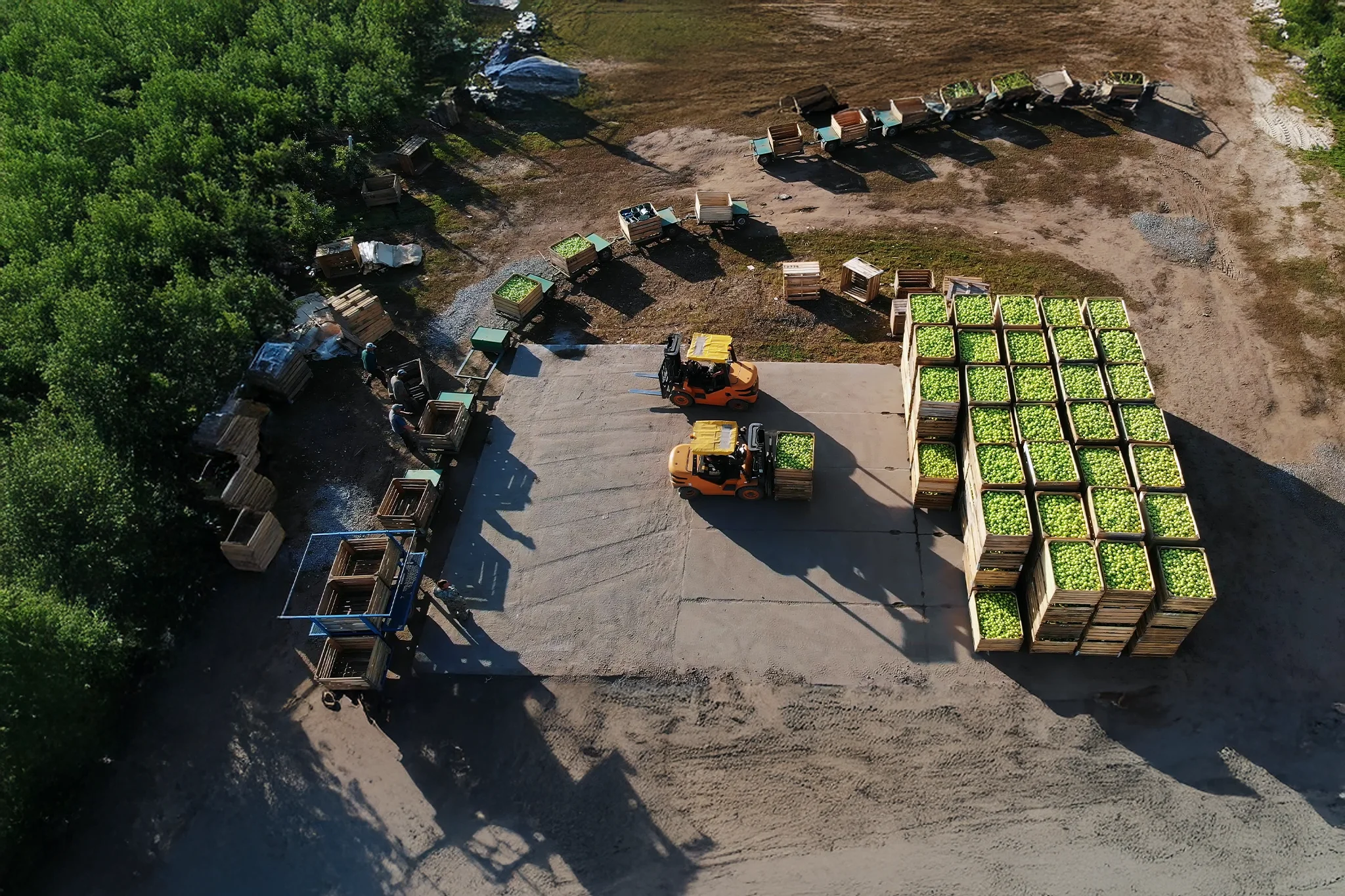The future of agtech in disease management
The enterprise of agriculture is, and must always be, fundamentally driven by the imperative of the world’s food supply security. And it is justifiably so. Every year, plant diseases wipe out an estimated 20-40% of global crop production, transforming an environmental problem into an urgent threat to food security and economic stability. Traditionally, farmers detected plant diseases once visible symptoms appeared – a costly race against time. With agritech evolving, plant disease management is transforming.
The integration of artificial intelligence and deep learning with IoT devices makes plant disease management a well-informed sophisticated prediction exercise providing farmers with actionable insights that are both timely and precise. AI models have become crucial for disease mitigation, accurately predicting the probability of disease occurrence. This shift from reaction to prevention is the key to preserving yield and building resilience. In this blog, we will explore the power of Cropin’s Disease Early Warning System (DEWS) and examine the critical diseases it helps control across various crops.
What are the factors that impact plant disease occurrence
Traditionally plant diseases are caused by bacteria, viruses, fungi, and other infectious organisms affecting leaves, roots, and even stems.

Plant disease occurrence is never random; it is governed by three factors:
- Crop susceptibility to a pathogen: Thankfully, not all plants are susceptible to all pathogens. For example, Magnaporthe oryzae causes Blast Disease in rice, but does not in potatoes. Simply put, specific plant is vulnerable to a specific pathogen.
- Crop growth stage: A specific pathogen attacks a host plant only at a specific window of growth. For instance, in potato early blight, as the name suggests, begins its lifecycle early, but visible symptoms typically manifest during the critical tuber bulking stage.
- Climatic conditions: Weather accelerates plant disease occurrence and spread, as each pathogen requires a specific environment to thrive. False Smut in paddy, for instance, flourishes under high relative humidity (above 95%) and moderate temperatures (25–30 °C), making dry spells a natural inhibitor.
When these three elements converge, the probability of an outbreak spikes significantly.
Cropin DEWS: Predictive prevention, not reactive cure
A core lesson in agriculture is this: once a plant disease manifests, it becomes impossible to compensate the loss with either fertilization or irrigation making prevention vital for global food security. Prevention is not just better than a cure—it is the only solution. Cropin’s Disease Early Warning System (DEWS) feature is a step in this direction. It enables farmers to eradicate losses by providing them with alerts about the probability of disease occurrence well in advance to drive mitigative efforts.
- Inputs: Crop variety, real-time & historical weather data, past disease occurrences, and current crop growth stage.
- Intelligence: The algorithm (based on an unsupervised decision tree) processes these inputs to calculate the probability of disease occurrence at a specific crop variety and growth stage level.
- Learning Loop: The model continually improves its accuracy by validating historical and current predictions against actual ground conditions.
- Actionable Alerts: Alert thresholds can be configured, with a default critical warning set at a >75% probability.
This proactive approach is revolutionizing sustainable plant health management by reducing crop damage and significantly curtailing chemical use.

Top diseases predicted by Cropin DEWS
Cropin DEWS provides critical early warnings for over 80 diseases globally. Here are some top examples demonstrating the system’s ability to protect different crops across geographies:
1. Potato – Late Blight (Phytophthora infestans):
Late blight in potato can result in losses of 20–40% in northern and southern India. The disease spreads rapidly in cool, humid conditions, which are actively seen during vegetative growth and tuber formation. Our early warning systems have detected its initial signs, helping farmers take timely action by advising them to use resistant varieties, ensure proper drainage, and apply fungicides at the first signs of infection.
2. Tobacco – Frog-Eye Leaf Spot (Cercospora nicotianae):
Tobacco crops in India and Southern China can suffer average yield losses of about 30% due to Frog-Eye Leaf Spot, particularly under humid conditions, which appears as circular, ash-gray spots with dark borders on older leaves, typically during the vegetative to preharvest stage. Our early warning systems have detected its early signs, helping farmers take timely action by removing infected debris, maintaining balanced fertilization, and applying fungicides at the first symptoms.
3. Paddy (Rice) – Blast Disease (Magnaporthe oryzae):
Blast, a fungal disease of paddy, causes average yield losses of 20%, particularly in high-rainfall and upland fields of South and Southeast Asia. Seen particularly during the vegetative and reproductive phase of the crop, spindle-shaped gray lesions with brown margins on leaves, nodes, and panicles significantly reduce grain filling rate. Cropin’s DEWS helps in identifying early disease occurrence and guides farmers to grow resistant varieties, maintain proper field drainage, and avoid excess nitrogen.
4. Strawberry – Anthracnose Fruit Rot (Colletotrichum spp.):
Strawberry crops in the US, China, and Argentina can suffer severe fruit losses under warm, wet conditions, with significant quality deterioration due to anthracnose fruit rot, particularly during the fruiting stage. The disease appears as dark, sunken, water-soaked spots on ripe fruits. Our early detection alerts have identified its onset, helping farmers take timely action by using certified disease-free seedlings, avoiding overhead irrigation, and applying fungicides.
5. Grapes – Powdery Mildew (Erysiphe necator):
Grapevines in the US, North America, and Europe experience yield and wine quality losses exceeding 33% if powdery mildew is unmanaged, particularly during the vegetative and fruiting stages. The disease manifests as white, powdery fungal patches on leaves, shoots, and berries. Cropin’s DEWS have identified its onset, guiding growers to maintain open canopies, apply systemic fungicides, and plant resistant cultivars to protect both yield and the quality of the harvest.
6. Wheat – Stem Rust (Puccinia graminis f. sp. tritici):
Stem Rust in wheat is one of the major diseases in regions of Ethiopia, Kenya, and Mexico. Crops can suffer yield losses of 60-65% if infected early, notably during the flowering and grain-filling stages. The disease appears as reddish-brown pustules on stems and leaves, weakening plants and reducing grain weight. Our early detection alerts have identified the onset, helping farmers take timely action by using rust-resistant varieties, applying fungicide, and removing volunteer wheat to protect both yield and quality.
7. Cotton – Fusarium Wilt (Fusarium oxysporum):
Cotton crops in Uzbekistan, the US, and India can suffer yield losses of 20–25% and reduced fiber quality due to wilt, particularly during the mid- to late-growth stages, when leaves begin to yellow and vascular tissues darken. Our early warning systems have identified its appearance, helping farmers take timely action by assisting them in growing resistant varieties, practicing crop rotation, and treating the soil with formulations to protect both yield and quality.
8. Maize – Alternaria Leaf Blight (Alternaria spp.):
Maize crops in temperate regions such as Serbia and Romania can experience yield losses during humid summers due to Alternaria Leaf Blight, particularly during the pre-tasseling and grain-filling stages. The disease appears as small, dark brown to black concentric spots on leaves, which enlarge and cause leaf blighting, reducing photosynthesis. Our early detection alerts have identified its onset, helping farmers take timely action by using resistant hybrids, practicing crop rotation, ensuring good field sanitation, and applying protective fungicides to safeguard both yield and crop quality.
9. Cocoa – Black Pod Disease (Phytophthora palmivora):
Cocoa crops in Central and West Africa can suffer yield losses of 60-100% annually due to Black pod disease, which becomes severe during the pod development stage during the rainy season. The disease begins as brown lesions at the pod tips that quickly turn black and spread rapidly. Our early warning systems have identified its onset, helping farmers take timely action through field sanitation measures, improved drainage, and regular application of copper fungicides to protect both yield and quality.
10. Broccoli – Head Rot / Alternaria (Alternaria spp):
Broccoli crops in Mexico’s cooler production zones can experience considerable yield and quality losses due to Head Rot caused by Alternaria spp., especially under humid conditions during the heading stage. The disease appears as brown to black spots on heads and florets, reducing marketability. Cropin’s DEWS have identified its onset, helping farmers take timely action by using clean seed, improving air circulation, avoiding overhead irrigation, and applying fungicides to protect both yield and quality.
11. Sorghum – Anthracnose (Colletotrichum spp):
In Africa and Ethiopia, sorghum crops can suffer significant yield losses of about 40-60% due to Anthracnose, particularly during the early seedling stage, when leaves develop irregular, oval-to-elongated lesions with yellow-to-reddish-brown margins. Our early warning systems have identified its early occurrence, helping farmers take timely action by suggesting proactive physical, chemical, and cultural control measures.
12. Barley – Powdery Mildew (Blumeria graminis f. sp. hordei):
Barley crops can experience yield and quality losses of 20–40% due to Powdery Mildew in regions such as Europe and Mexico, particularly during the tillering-to-heading stage. The disease appears as white, powdery fungal patches on leaves and stems. Cropin’s Early warning systems have identified its onset, helping farmers take timely action by maintaining proper plant spacing, improving air circulation, growing resistant varieties, and applying protective fungicides to safeguard both yield and crop quality.
13. Lettuce – Downy Mildew (Bremia lactucae):
Lettuce crops in cool, humid growing regions can suffer yield losses in susceptible cultivars due to Downy Mildew. The disease appears as pale-yellow patches on leaves with fuzzy, grayish growth on the undersides, spreading rapidly through airborne spores and water splash. Cropin’s DEWS have alerted farmers, helping them take timely action by planting resistant varieties, improving air circulation, and applying fungicides preventively to protect both yield and marketable quality.
14. Chickpea – Fusarium Wilt (Fusarium oxysporum f. sp. ciceris):
Chickpea crops in major growing regions of India, Pakistan, and Ethiopia can suffer severe yield losses due to Fusarium Wilt, particularly during the vegetative to flowering stages. The disease causes yellowing, wilting, and eventual plant death, drastically reducing harvestable yield. Our early detection alerts have identified its onset, helping farmers take timely action by planting resistant varieties, practicing crop rotation, and ensuring proper soil health management to protect both yield and crop vitality.
15. Paddy – Brown Spot (Bipolaris oryzae);
Rice crops across major belts in India can suffer yield losses of 10–30%, particularly during the seedling to panicle initiation stages, due to Brown Spot disease. The disease appears as small, circular to oval brown lesions with a yellow halo on leaves, which can coalesce and reduce photosynthetic capacity. Our early detection alerts have identified its onset, helping farmers take timely action by planting resistant varieties, applying balanced fertilizers, maintaining proper field drainage, and using protective fungicides, safeguarding both yield and crop quality.
16.Cotton – Bacterial Blight (Xanthomonas citri pv. malvacearum, India,UN,Pakistan):
Cotton crops in India, the US, and Pakistan can suffer yield and fiber quality losses of 20–40% due to Bacterial Blight, particularly during the vegetative and early boll-formation stages. The disease appears as water-soaked angular lesions on leaves, stems, and bolls. Our early detection alerts have identified its onset, helping farmers take timely action by planting resistant varieties, practicing crop rotation, removing infected plant debris, and applying bactericides to safeguard both yield and quality.
17. Wheat – Bacterial Blight (Pseudomonas syringae pv. tritici):
Wheat crops in major growing regions of India, the US, and Europe can suffer yield losses of 20-25%, particularly during the vegetative and booting stages, due to Bacterial Blight. The disease appears as water-soaked streaks and lesions on leaves and stems, which later turn brown and necrotic, reducing photosynthetic capacity. Our early detection alerts have identified its onset, helping farmers take timely action by using resistant varieties, practicing crop rotation, removing infected residues, and applying specific bactericides to protect both yield and quality.

Conclusion: Securing the Future with Predictive Plant Health
Disease poses a primary threat to global yield stability. However, by adopting predictive systems like Cropin DEWS, agriculture can finally pivot from a reactive state to a proactive management strategy. This shift delivers powerful dual benefits: economic stability for the farmer through improved yield and minimized management expenses, and environmental sustainability through the dramatic reduction of broad-spectrum chemical use. By providing high-confidence alerts well ahead of an outbreak, DEWS ensures every action is timely and targeted, leading to efficient resource use and healthier soil ecosystems. Predictive prescriptive farming, powered by AI, is the key to minimizing irreparable crop damage and securing a more resilient, sustainable, and food-secure future.







